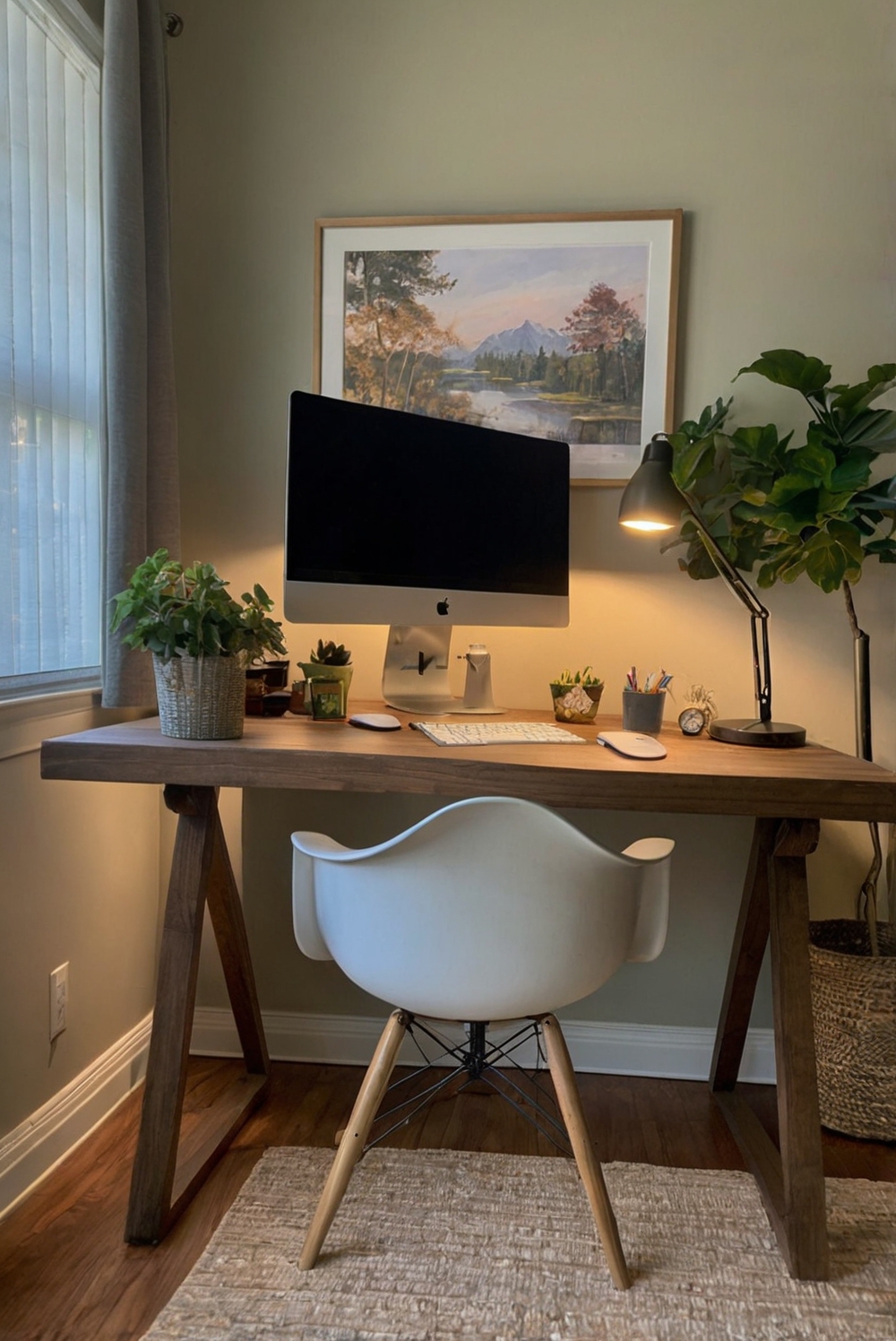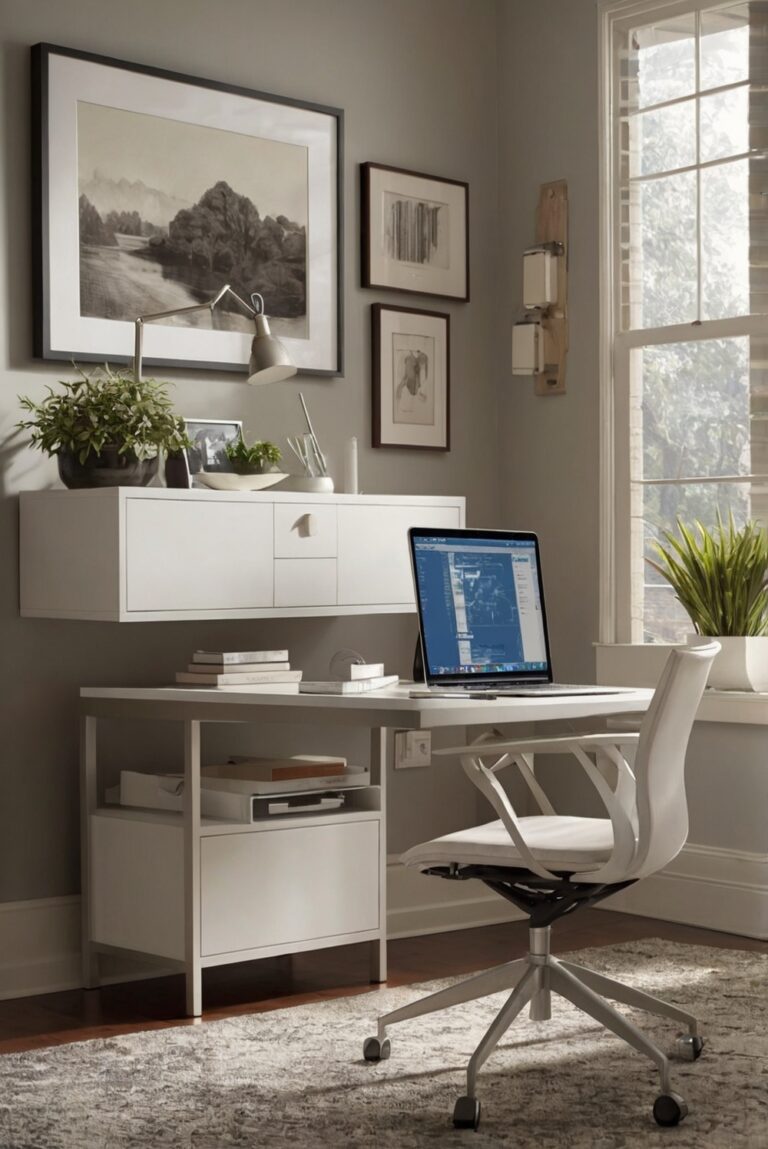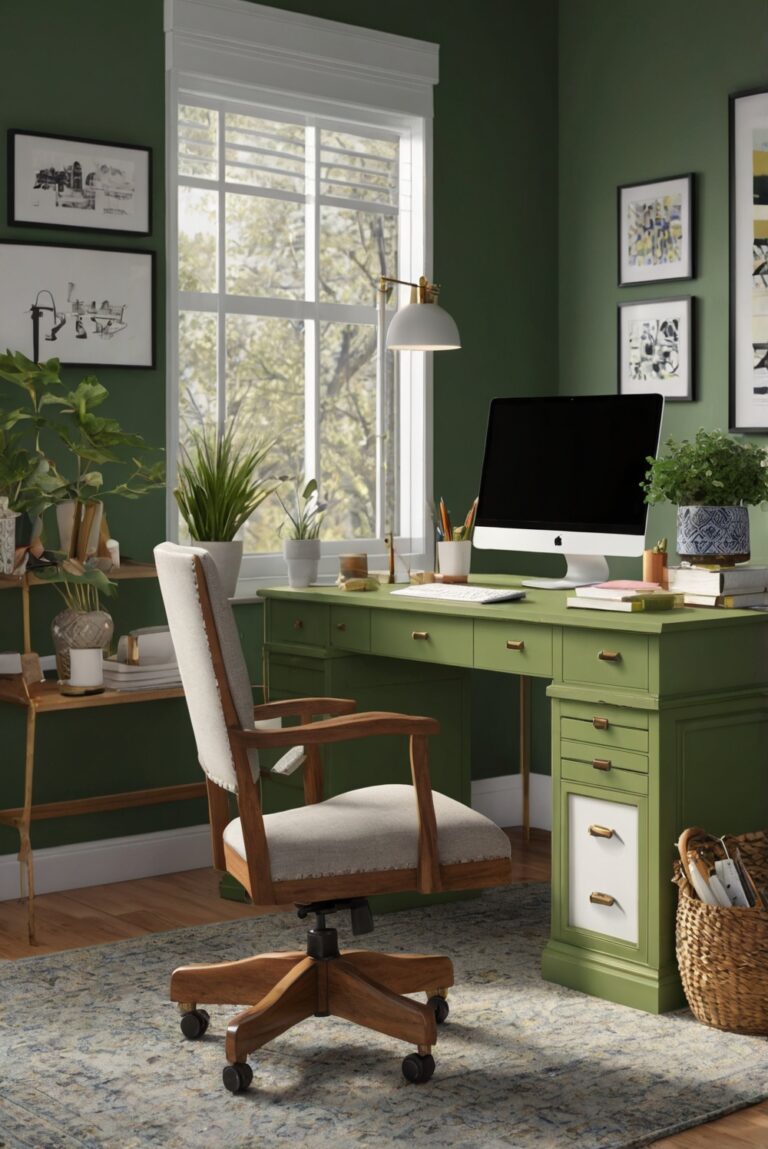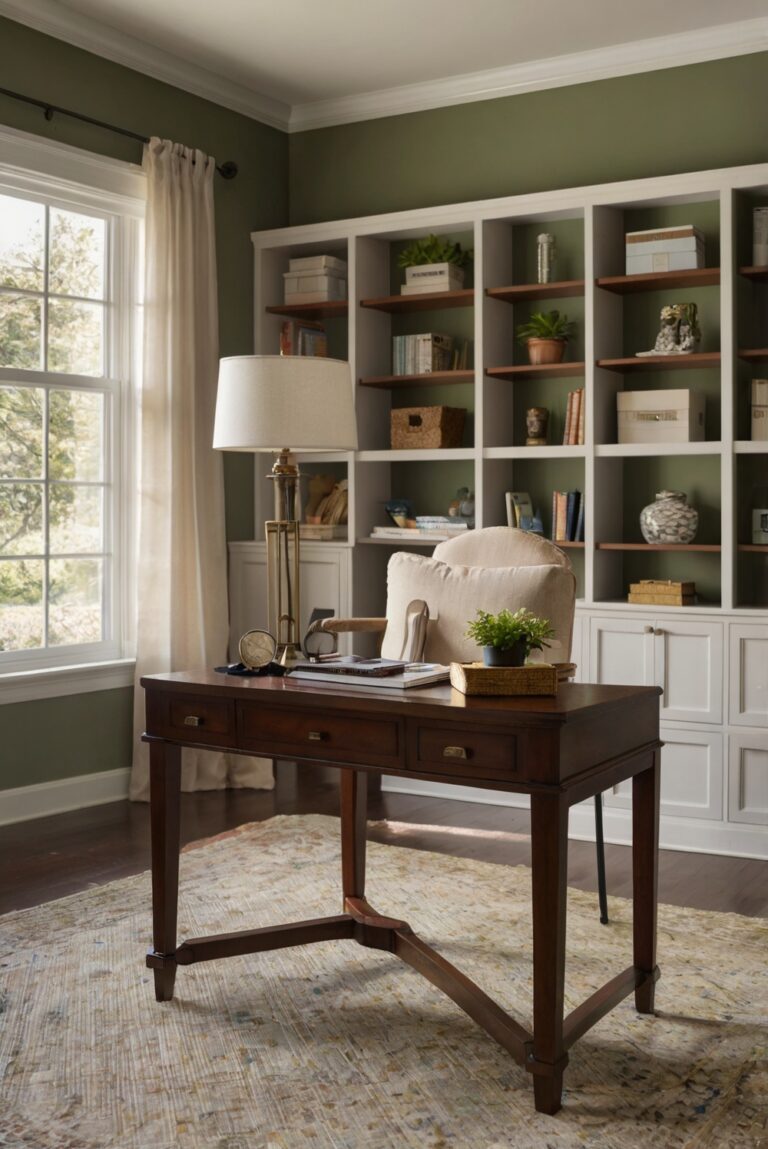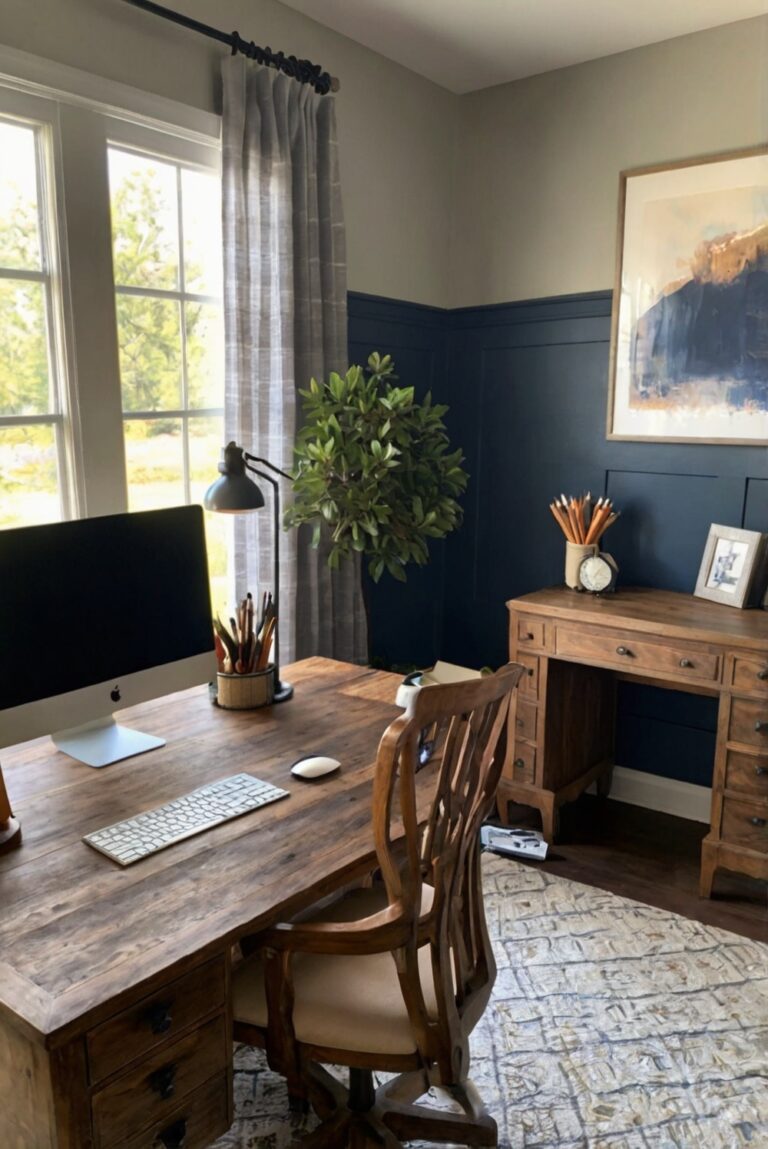Are you wondering how to incorporate lighting into your home office desk setup? Join us for daily interior designer routine tips on creating the perfect workspace ambiance.
**
How can I incorporate lighting into my home office desk setup?
**
**
Answer:
**
To illuminate your home office desk setup effectively, consider these steps:
1. **Desk Lamp:** Add a desk lamp for direct light that reduces eye strain.
2. **Overhead Lighting:** Ambient lighting brightens the room and reduces shadows.
3. **Task Lighting:** Use specialized lighting to highlight specific work areas.
4. **Adjustable Light Levels:** Incorporate dimmable bulbs to control brightness.
5. **Natural Light:** Position your desk near windows to maximize natural light.
6. **Color Temperature:** Opt for cool white bulbs to increase focus and productivity.
7. **Cord Management:** Ensure proper cord organization to maintain a neat and clutter-free workspace.
By following these lighting tips, you can create a well-lit and visually appealing home office desk setup that enhances your productivity and comfort.
*Focused keywords: home decorating, home interior, home interior design, home decor interior design, space planning, interior design space planning, decorating interiors, interior bedroom design, designers kitchen, kitchen designs, living room interior, designer wall paint, primer paint for walls, color matching painting, paint color match, home paint colors.*
How can I incorporate lighting into my home office desk setup?
Lighting is a crucial aspect of any home office desk setup as it can significantly impact your productivity, mood, and overall well-being. Here are some tips on how you can effectively incorporate lighting into your workspace:
1. Choose the right type of lighting:
When setting up the lighting for your home office desk, it’s essential to consider the different types of lighting available. Task lighting is ideal for focusing on specific work areas, while ambient lighting can create a warm and inviting atmosphere. Natural light is also important as it can help reduce eye strain and boost your mood.
2. Position your lights strategically:
Proper positioning of your lights is key to creating a well-lit workspace. Place task lighting sources, such as desk lamps or overhead lights, to illuminate your work surface without causing glare or shadows. Consider using adjustable lamps that allow you to direct the light where it’s needed most.
3. Use lighting to enhance your decor:
Lighting can also be used as a decorative element in your home office desk setup. Choose fixtures that complement your existing decor style and add a touch of personality to your workspace. Consider using statement lighting pieces or LED strip lights to create a visually appealing environment.
4. Consider the color temperature of your lights:
The color temperature of your lighting can have a significant impact on your productivity and mood. Cool white light is ideal for tasks that require focus and concentration, while warm white light can create a more relaxing atmosphere. Consider using smart bulbs that allow you to adjust the color temperature based on your needs.
5. Invest in lighting accessories:
Enhance the functionality of your home office desk setup by investing in lighting accessories such as dimmer switches, smart plugs, or lighting timers. These accessories can help you customize your lighting to suit your preferences and create the perfect work environment.
Incorporating lighting into your home office desk setup is essential for creating a productive and comfortable workspace. By following these tips and considering the different aspects of lighting, you can design a well-lit and visually appealing environment that enhances your work performance and overall well-being.
1. What are the best types of lighting for a home office desk setup?
Incorporating task lighting such as desk lamps, adjustable LED lights, or overhead lighting fixtures can enhance productivity and reduce eye strain. Natural light is also beneficial, so positioning your desk near a window can provide a good source of light. It’s important to choose lighting that is adjustable to control brightness and reduce glare.
2. How can I optimize lighting placement for my home office desk setup?
Positioning lighting sources strategically can make a significant difference in your work environment. Place task lighting at the appropriate height and angle to illuminate your work surface without casting shadows. Avoid placing lights directly above your computer screen to reduce screen glare. Experiment with different lighting placements to find the most comfortable setup for your eyes.
3. Are there any specific color temperature recommendations for office lighting?
Choosing the right color temperature for your lighting can impact your productivity and mood. For a home office desk setup, consider using cool white or daylight bulbs (5000-6500 Kelvin) to mimic natural sunlight and promote alertness. Warm white bulbs (2700-3000 Kelvin) can create a cozy atmosphere but may not be ideal for tasks that require focus and concentration.
4. How can I make my home office desk setup more energy-efficient with lighting?
To make your home office more energy-efficient, opt for LED or CFL bulbs that consume less energy and have a longer lifespan compared to traditional incandescent bulbs. Consider using smart lighting systems or timers to control when your lights are on and off, reducing unnecessary energy consumption. Additionally, maximizing natural light during the day can help reduce the need for artificial lighting.
5. Are there any lighting design tips to enhance the aesthetics of my home office desk setup?
Incorporating stylish lighting fixtures can enhance the overall look of your home office desk setup. Consider using pendant lights, wall sconces, or decorative desk lamps that complement your office decor. Dimmable lights can create a cozy ambiance for evening work sessions or video calls. Adding task lighting with adjustable arms or swivel heads can also provide a functional and visually appealing touch to your workspace.

